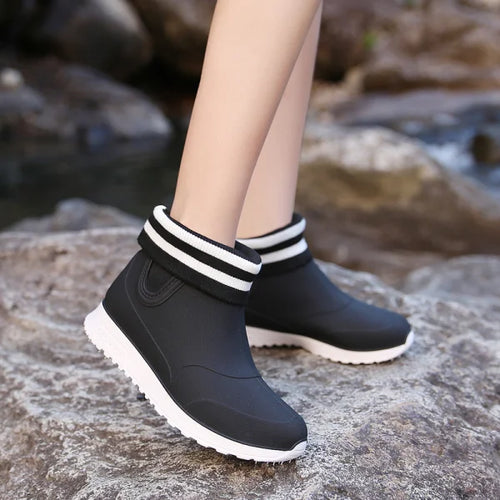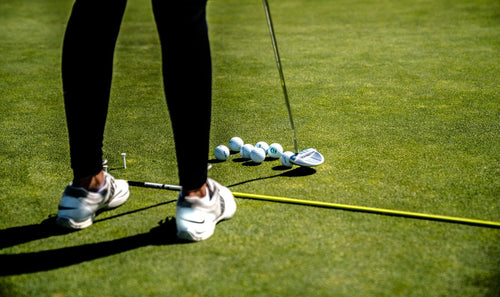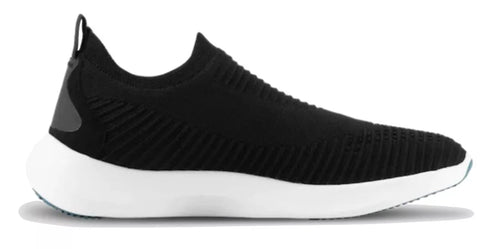Finding the perfect pair of waterproof running shoes can be difficult. Once you find them, it can be equally challenging to throw them out. But no matter how hard you try to delay the inevitable, your shoes can only serve you for so long.

But exactly how long are we talking here?
Surprisingly, people tend to underestimate the lifespan of their shoes by a long shot. On the other end of the spectrum, some people don’t realize the importance of promptly replacing old shoes with fresh pairs.
Unfortunately, there isn’t a precise expiration date you can place on footwear. Moreover, different sources make different claims regarding how long sneakers last.
So, if you’re running in circles looking for an answer, take a breather because here it is.
How Long Do Running Shoes Last?
There is a consensus among experts that you should change your running shoes after 300-500 miles or 500-750 kilometers. If you’re a frequent runner who averages 20 miles per week, this translates to approximately four to six months of use.
But where did these numbers come from? And how accurate are they?
The rule of thumb emerged from a 2004 study titled “Heel-Shoe Interactions and the Durability of EVA Foam Running-Shoe Midsoles.” Most modern lightweight running shoes use EVA midsoles. EVA midsoles are responsible for the cushioning of the shoes, i.e., the heart and soul of a good pair of running sneakers.
The study found that the EVA midsole started losing its structural integrity around the 750 km mark, although the measurable effects of weakened cushioning were evident well before.
At this point, you must be thinking that this study sounds pretty convincing. Well, think again.
First of all, researchers conducted this study using a computer simulation program known as Finite Element Analysis. While it has the potential to be highly accurate, it simply can not account for the diverse real-life conditions that runners face every day.
Secondly, the study only focuses on the midsole. While midsoles are the structural glue of a lightweight running shoe, other factors also influence the lifespan of sneakers.
So, while the study results are a good reference point, it’s important to remember that they are not conclusive.
You may also like: How to Measure Running Shoes That Will Fit Your Feet Perfectly
Factors That Determine the Lifespan of Your Shoes

Your shoes’ lifespan can range anywhere from less than a few months to over a year, depending on different factors:
- Your shoes will last much longer if you run on asphalt rather than unpaved trails. The outsole wears out much faster when you’re running along rocky, uneven trails compared to treadmills or paved avenues.
- Running Style. There are two types of runners: sprinters and casual runners. Sprinters typically go for a forefoot strike, which entails a shorter period of contact between the shoes and the ground. Because of this, the soles sustain lesser pressure and can last a long time.
Casual runners will inflict more pressure on the shoes’ soles, causing them to wear out faster.
- Your Build. The heavier you are, the quicker your shoes will wear out. This is because the pressure on your shoes while running will be much greater. The amount of force you exert on your shoes with each foot strike equals 3-4 times your body weight.
So, if you weigh 150lbs, you’ll generate 600 lbs of pressure every time your foot touches the ground.
- Your Shoes’ Maintenance. Failure to take proper care of your shoes will only come back and haunt you later on. Proper storage, cleaning, and wearing habits can add weeks, if not months, to your shoes’ life.
As you can see, multiple factors determine how long your shoes will last. Hence, binding your shoes’ lifespan to a particular time or mileage is uncalled for.
Instead, it would be best if you rely on your knowledge to judge whether it’s time to replace your old sneakers.
Signs That Your Shoes Are Worn Out
Some tell-tale signs indicate that it’s time to throw out your old kicks.
Excessive Creasing
Creasing can be a huge nuisance when it comes to running shoes. On the surface, heavily-creased shoes look unsightly. However, the problem runs much deeper than that.
Walking or running in creased shoes can be highly uncomfortable and often painful. Typically, running shoes will bend along the pivot point as you move around. This is to cater to the natural flexing motion of your feet.

However, overly-creased shoes will have lost almost all of their structural integrity. Instead of flexing with your feet, they will warp entirely out of shape. Thus, leading to blisters and friction burns.
If you notice that your shoes are creased all over, it’s better to throw them out.
The Shoes Feel Flat

One of the defining features of any lightweight running shoe is it’s cushioning. The midsole constitutes most of the cushioning mechanism.
However, if your shoes start to feel flat, it’s a clear indication that the midsoles are ready to retire.
An easy way to determine whether the cushioning has deteriorated is by feeling it with your hands. Try it out: Using your thumb, press down on the insole. If it feels tough rather than spongy, then your shoes have likely run their course.
Inexplicable Pains

For new runners, feet soreness is a pervasive issue. However, prolonged aches can be a sign of the wrong choice of footwear.
More concerningly, new, inexplicable pain is a tell-tale sign of worn-out shoes.
If you’re starting to feel pain in your feet, ankles, leg, and back that you’ve never felt before, this could be because the cushioning is no longer effective.
In this case, it’s better to be safe than sorry and invest in a new pair of waterproof running shoes.
Your Performance is Off
Similarly, worn-out shoes can throw you off your game completely.
With frequent running, your shoes start to loosen up and lose their structural integrity. You might not take heed of this at first, but unstable shoes can severely undermine your performance.
So, if you notice that you’re slower than usual, the problem might lie with your shoes.
Each running shoe has its discernable tread pattern that contributes to its traction and stability. Unfortunately, the outsoles sustain most of the damage when you’re out for a jog since they constantly strike hard pavements and rocky trails.
Over time, the outsoles become rounded and dull. When this happens, there’s nothing left to cushion your landings and keep you upright.
You can gauge the integrity of your outsoles by placing your shoes on a flat surface. If they sit at an angle or tend to rock and tip over, they’ve lost most of their functionalities. Running in worn-out soles can not only be uncomfortable but highly dangerous.
Torsional Rigidity
When manufacturers say that their shoes are flexible, they don’t mean that you should be able to bend the shoes in every way. If your shoes can twist and turn unnaturally, it means that they have lost their torsional rigidity.
Put your shoes to the test: hold them in such a way that one hand cusps the forefoot while the other grabs the heel. Then, twist them in the opposite direction. If you can do this with ease, it means that the soles have become too soft.
Visible Wear and Tear
Wear and tear are unavoidable when it comes to footwear— even if the shoes are brand-new. However, excessive abrasion of the upper is a clear sign that your shoes have served their term.
Sometimes, it’s not evident that the fabric is deteriorating. For example, tears within the toe box are usually not visible. However, you can still feel that something is off.
With damaged toe boxes, you’ll notice that your toes tend to slip through the materials. This can lead to blisters, bunions, and instability while running.
How to Make Your Shoes Last Longer
If the thought of throwing away your favorite pair of sneakers makes you queasy, there are ways that you can prolong their lifespan:
- Always get running shoes with an outsole that caters specifically to running. Firstly, the soles should cater to particular pronation. Secondly, choose a sole that complements your preferred running terrain. For example, trail-running will require sturdier and stiffer soles as compared to running on a treadmill.
- Alternate between running shoes. If you like to go for a run every day, it’s best to have at least two different pairs of shoes, so you don't overwear either of them.
- Invest in shoes that have built-in surface protection. The most important feature in this regard is water resistance. Moisture tends to morph the fabric and cushioning materials of the shoe, ultimately compromising its integrity.
Waterproof running shoes like Loom Waterproof Sneakers curb this problem by ensuring that not a single drop of water seeps into the fabric.
- Clean regularly by hand. Washing your shoes in the machine can be extremely damaging. Even aggressively scrubbing them can shed weeks off their life. Therefore, try cleaning your shoes after every run with a wet cloth to ensure you don’t ever have to turn to the machine.
Conclusion
Waterproof running shoes are tough, but they certainly don’t last forever.
While you may be tempted to hold on to your beloved pair as long as possible, knowing when to let go can make a world of difference to your performance.
Not only that but wearing your shoes past their expiration date can lead to a legion of health problems.
So, next time, do not procrastinate when it comes to replacing old shoes with new ones.



























